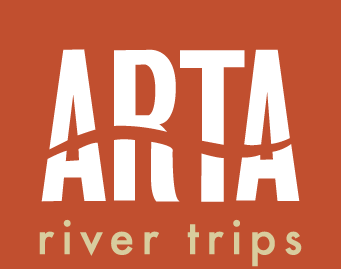Finding your comfort zone
The International Scale of River Difficulty explained
Finding the river trip with the approriate amount of thrills for your comfort level is paramount to having an enjoyable vacation; too much and you’ll be worried, too little and you’ll be bored, just right and you’ll be happy.
We want you to be happy.
To be happy, you need to match your desired thrill level with the difficulty level of the river.
We run a lot of rivers at different times of the year and offer a wide range of whitewater excitement. We also take different types of boats on the same trip whenever we can; giving families and groups the chance to enjoy the same river trip but have much different experiences; the daring can choose the independent excitement of an inflatable kayak while the less daring can choose the social excitement of a paddle raft and the least daring can choose the stable excitement of an oar raft, (and everyone can switch around depending on how daring they feel at that moment).
Choosing the trip that is just right (the Baby Bear trip) can be challenging, especially with the somewhat awkward rating system that we invented to try to describe the rapids. Hopefully this little guide will help.
Class Warfare
Some qualifiers:
I. Rating whitewater is an inexact science. Rapids are dynamic and they change depending on how much water is in the river so ratings are usually given as a range (from smooth Class I, to crazy Class VI – see below). Fortunately, we can almost always predict what the conditions and difficulty will be in advance so it is extremely unlikely that you will sign up for a fun Class III day on the river and be greeted by a wild Class IV+ adventure.
II. Rapids are rated, and then those ratings are loosely applied to the river as a whole, with the river rating usually leaning towards the highest rated rapid. A 40 mile river with one Class IV rapid and a 10 mile river with 20 Class IV rapids are often both referred to as Class IV rivers, but in reality they are much different things.
III. Rapids are rated on their difficulty, not necessarily on their fun. As the difficulty increases, the excitement and the sense of adventure almost always increase, but not always the fun. Most people think Class III rapids with big waves are more fun than Class IV+ rapids with lots of rocks. This is where your personal preference comes into play; if your sense of fun increases based on how scared you are (roller-coaster-lover), opt for the higher rated river (and go in an inflatable kayak); if your sense of fun increases based on how relaxed you are, (carousel-lover), opt for the lower rated river (and ride in an oar raft).
Here’s our take on the whole Roman Numeral thing:
Class I:
Smooth. Gentle current with teeny tiny waves, no obstacles and minimal changes in direction.
You can: Nap.
Your guide is: Applying sunscreen.
Example: All of the river in between the rapids.
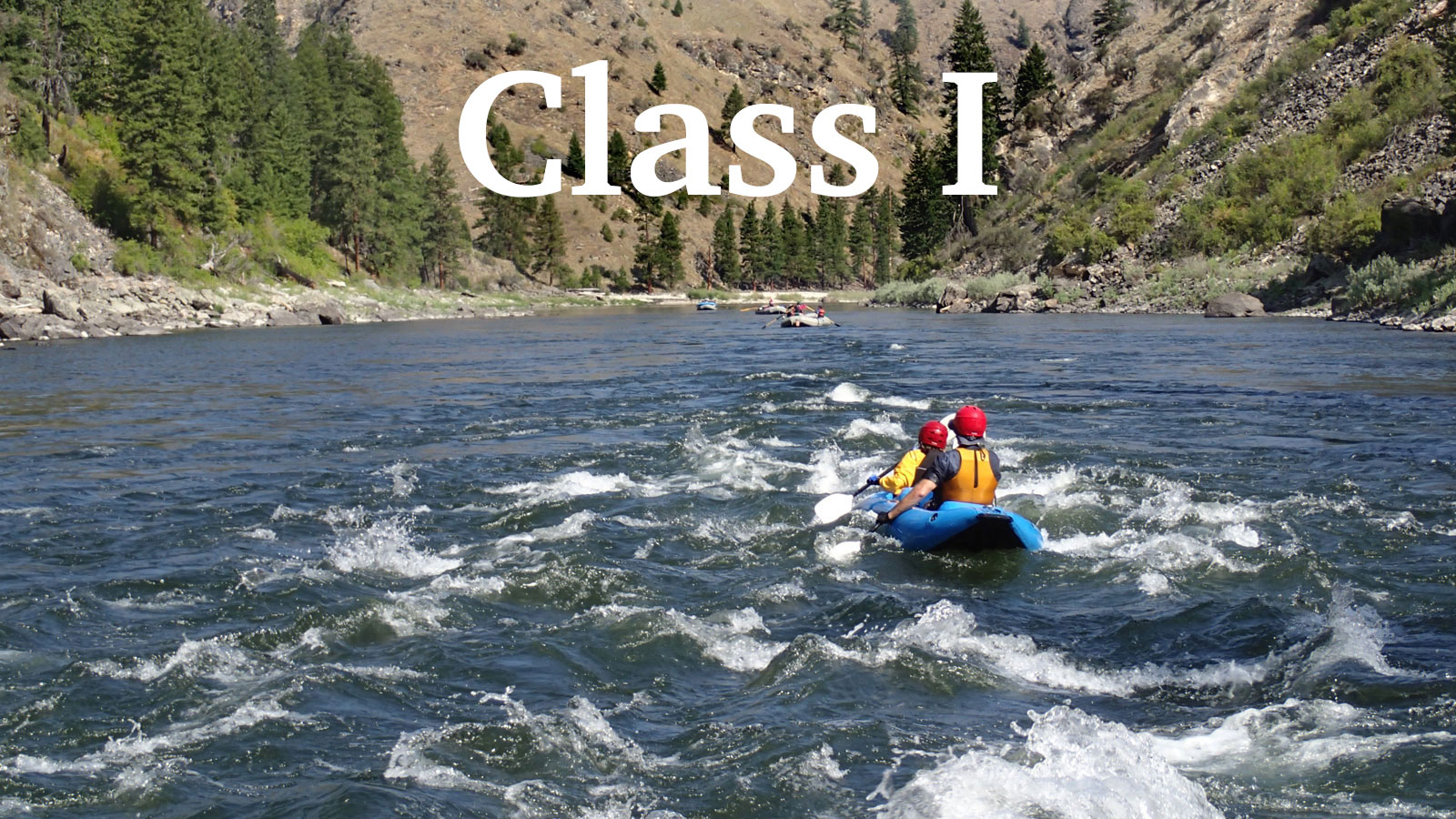
Class II:
Wavy. Choppy current with small, regular waves and a clear straight path through a few obvious obstacles.
You can: Keep your camera out.
Your guide is: Looking for wildlife.
Example: Everything with a little white and without a name.
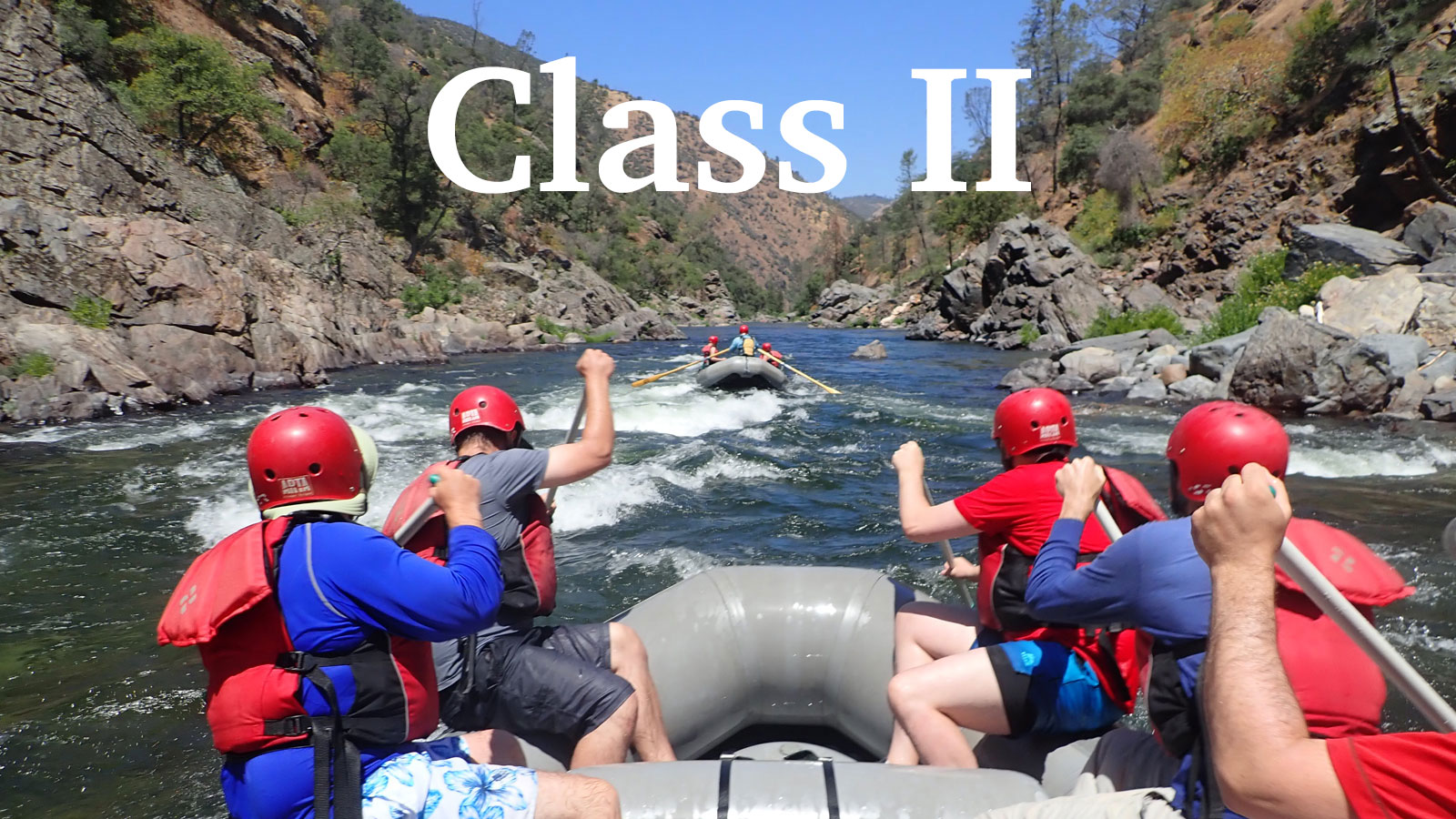
Class II+:
Glory. Fast current with one or two regular waves just big enough to splash the front of the raft.
You can: Try guiding the raft.
Your guide is: Telling a story.
Example: The rapids with the made-up extreme names (Killer Fang Falls).
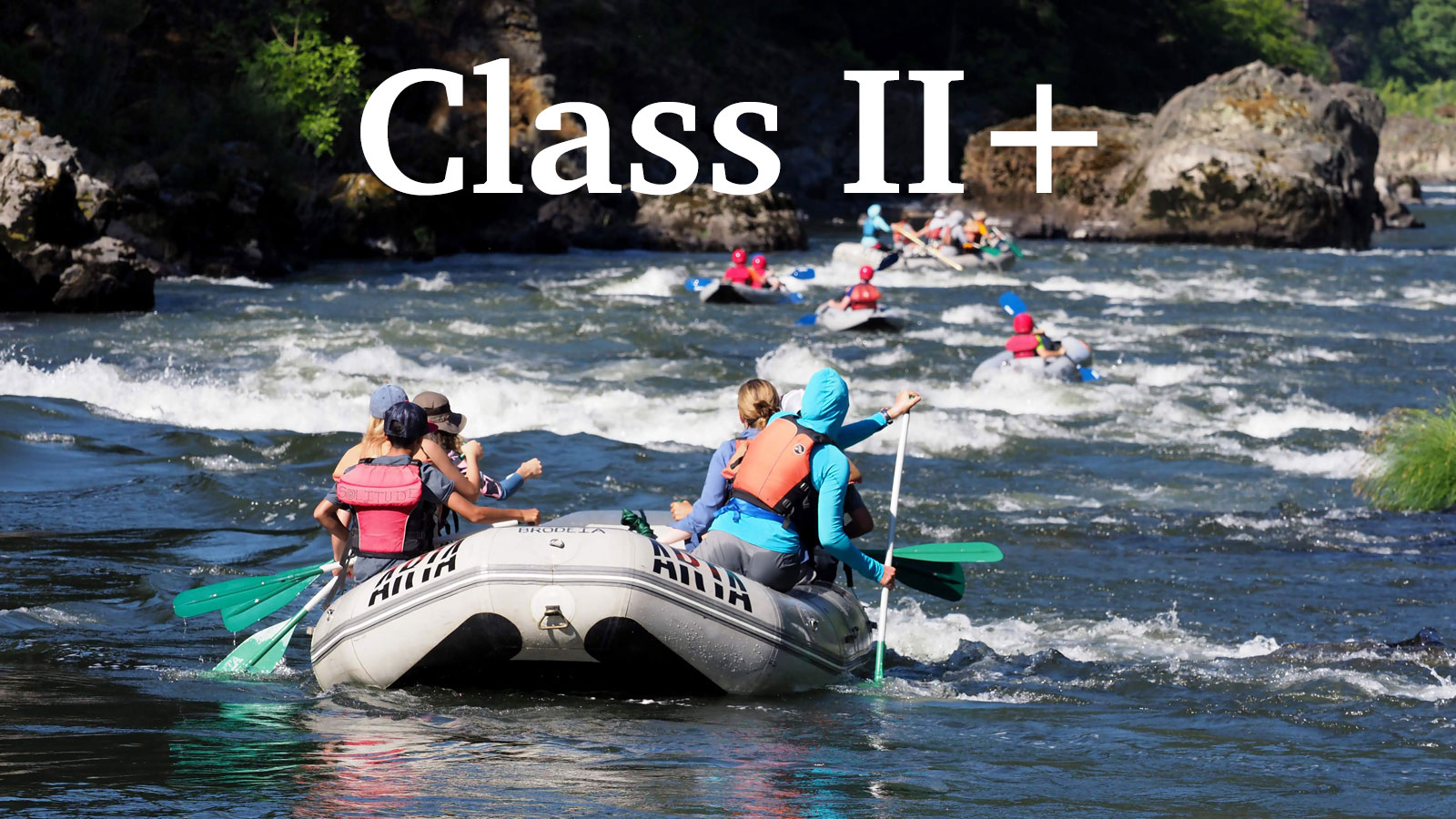
Class III:
Wet. Fast current with medium, regular waves and one or two obvious obstacles requiring minor maneuvering.
You should: Smile.
Your guide is: Excited.
Example: Satan’s Cesspool on the South Fork American.
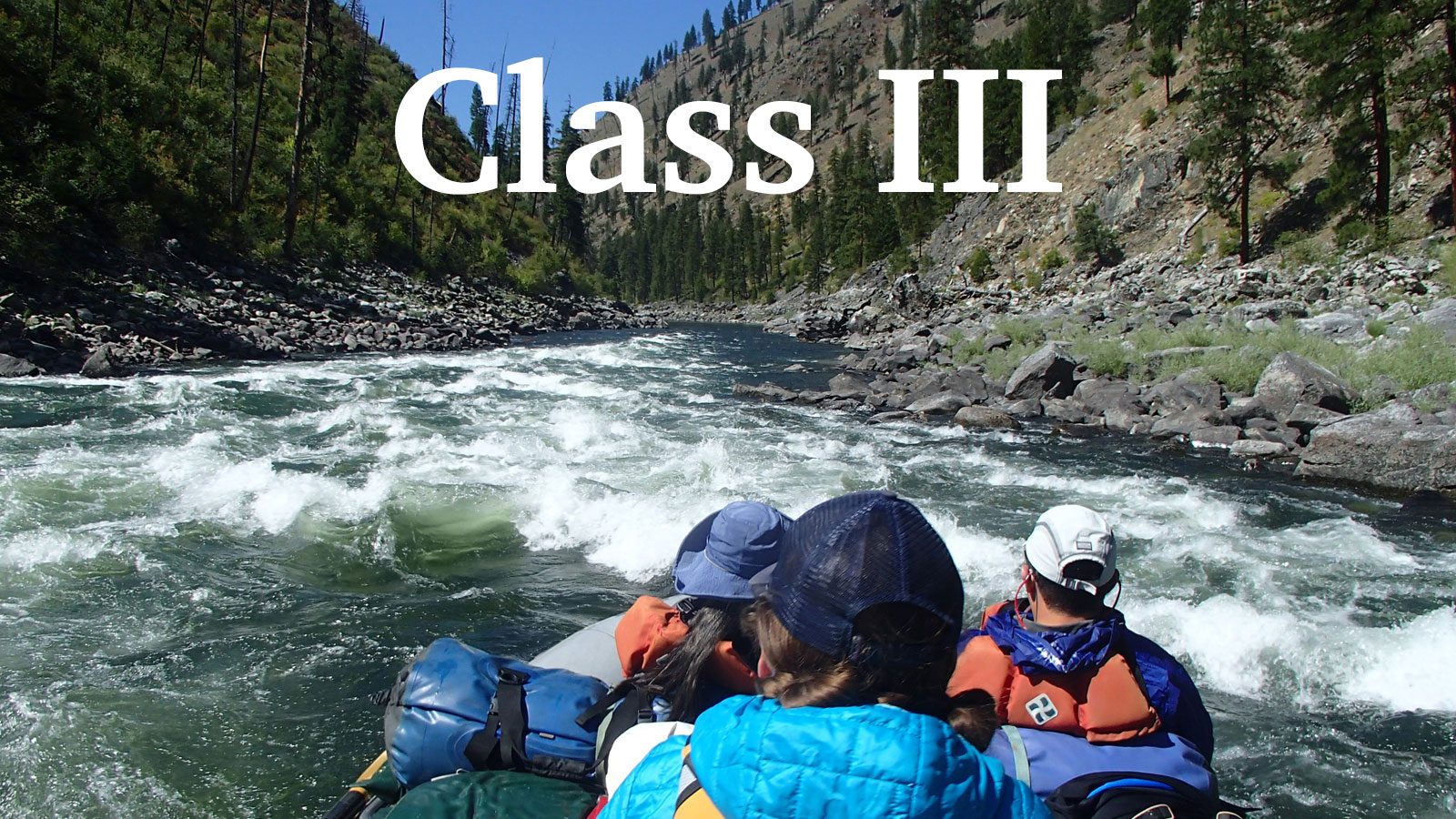
Class III+:
Sweet. Fast current with medium, irregular waves and one or two obstacles requiring precision maneuvering.
You should: Paddle hard (and smile).
Your guide is: Concentrating.
Example: Troublemaker on the South Fork American
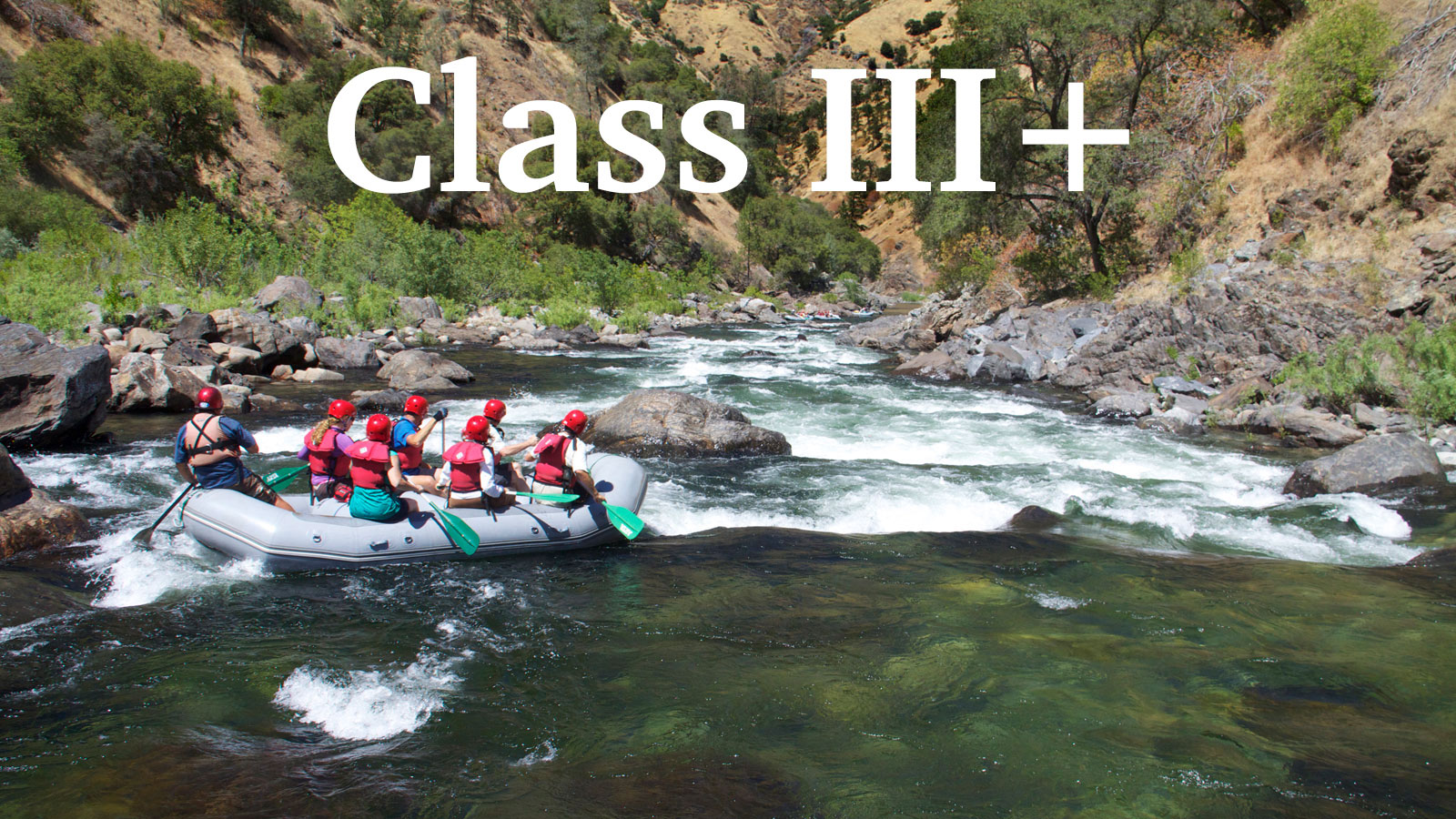
Class IV:
Testy. Fast current with big, irregular waves and lots of obstacles requiring multi-directional maneuvers.
You should: Brace yourself.
Your guide is: Not her jovial self.
Example: Clavey Falls on the Tuolumne at mid-summer flows.

Class IV+:
Wild. Fast current with big, unpredictable waves and multiple dangerous obstacles requiring precise and multi-directional maneuvers.
You should: Stay in the raft
Your guides are: Working together
Example: Green Wall on the Illinois
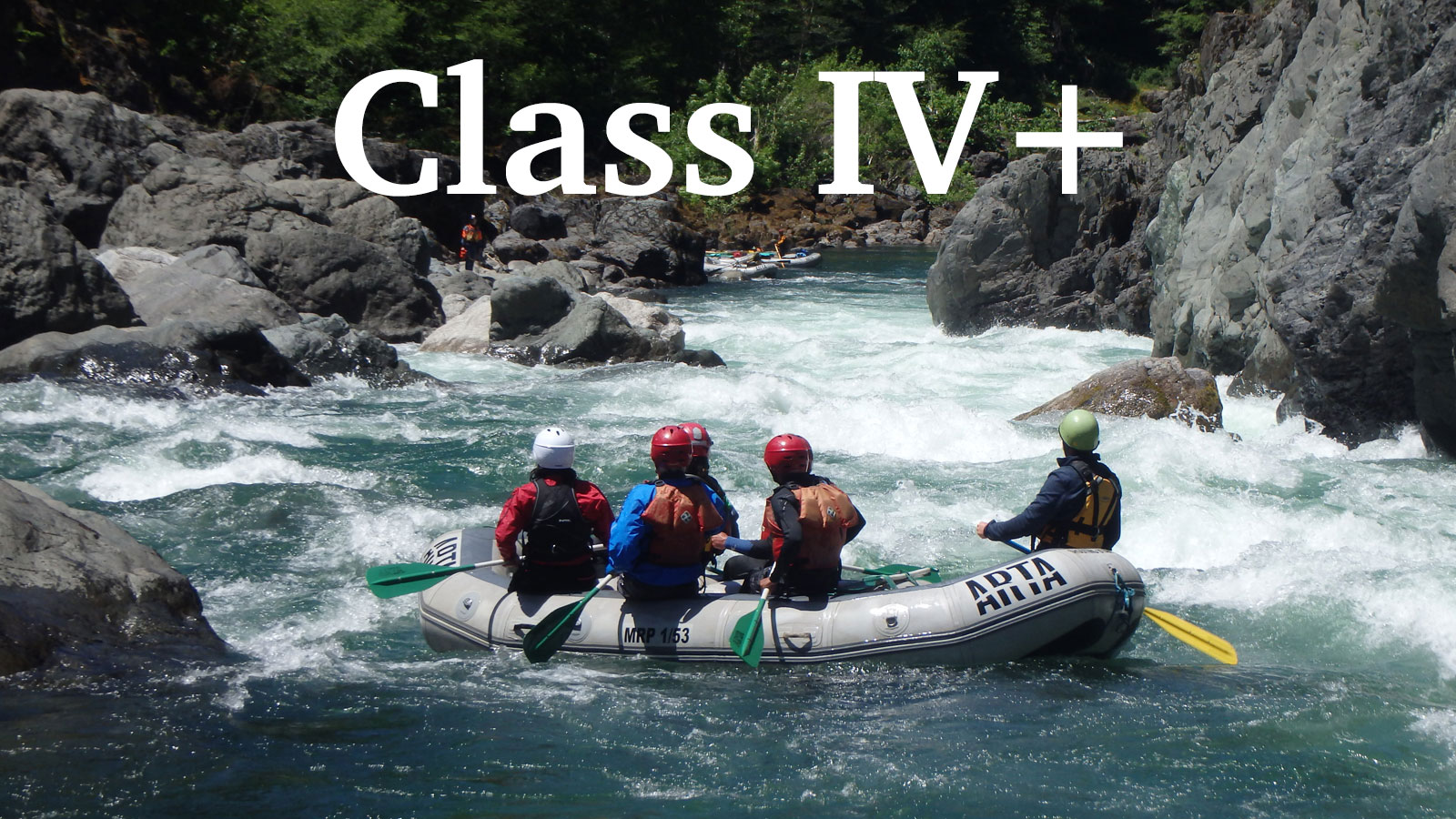
Class V:
Edgy. Strong current with violent, irregular waves and only one path through multiple obstacles with little room for error.
You should: Review your swimming procedures.
Your guides are: Focused and not in the mood for a waterfight.
Example: Clavey Falls on the Tuolumne at high water.
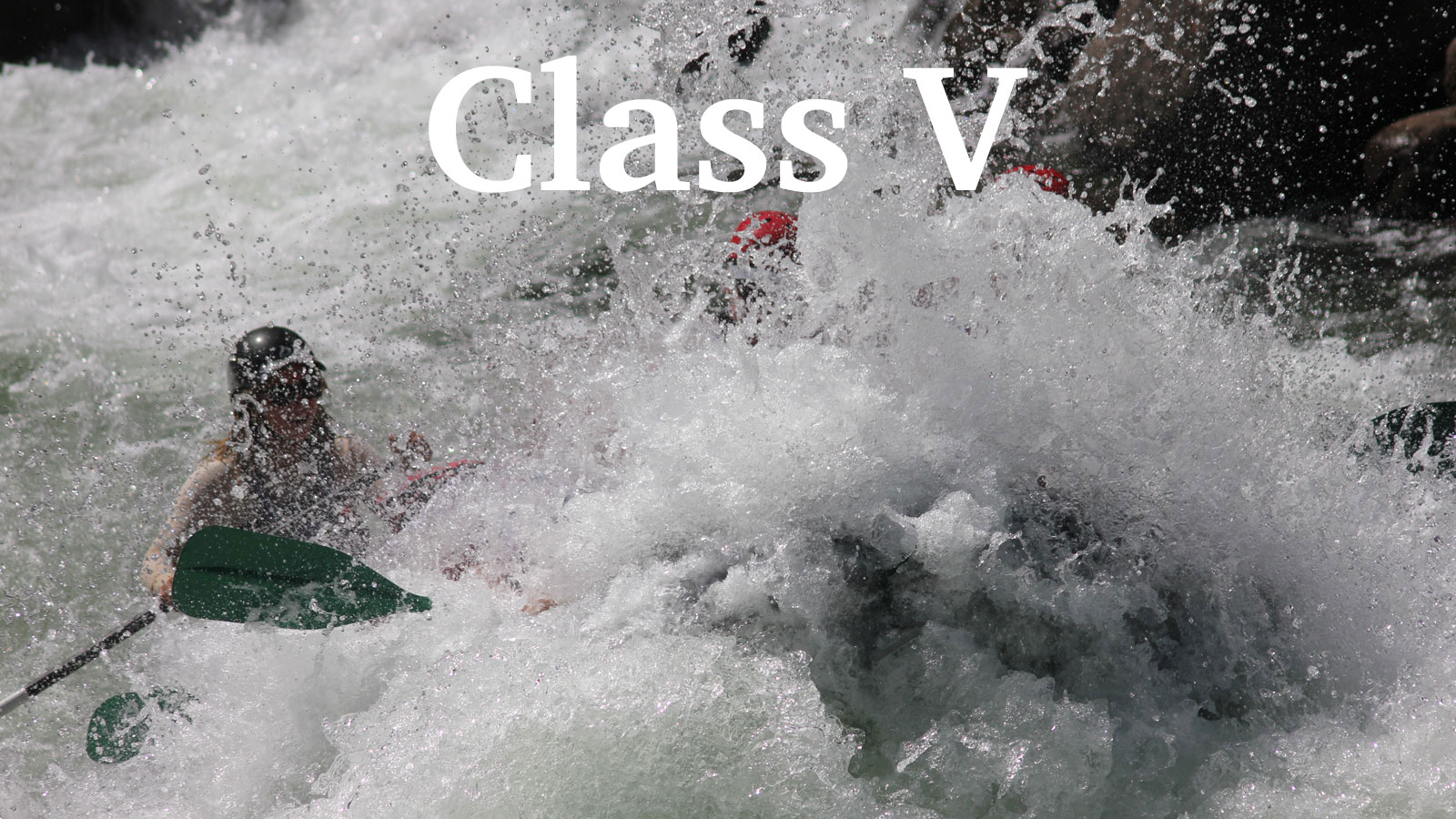
Class V+:
Extreme. Overpowering current with numerous violent, unpredictable waves and multiple obstacles requiring exact maneuvering with no room for error.
You should: Consider walking.
Your guides are: The best in the world.
Example: A dozen rapids on Cherry Creek.
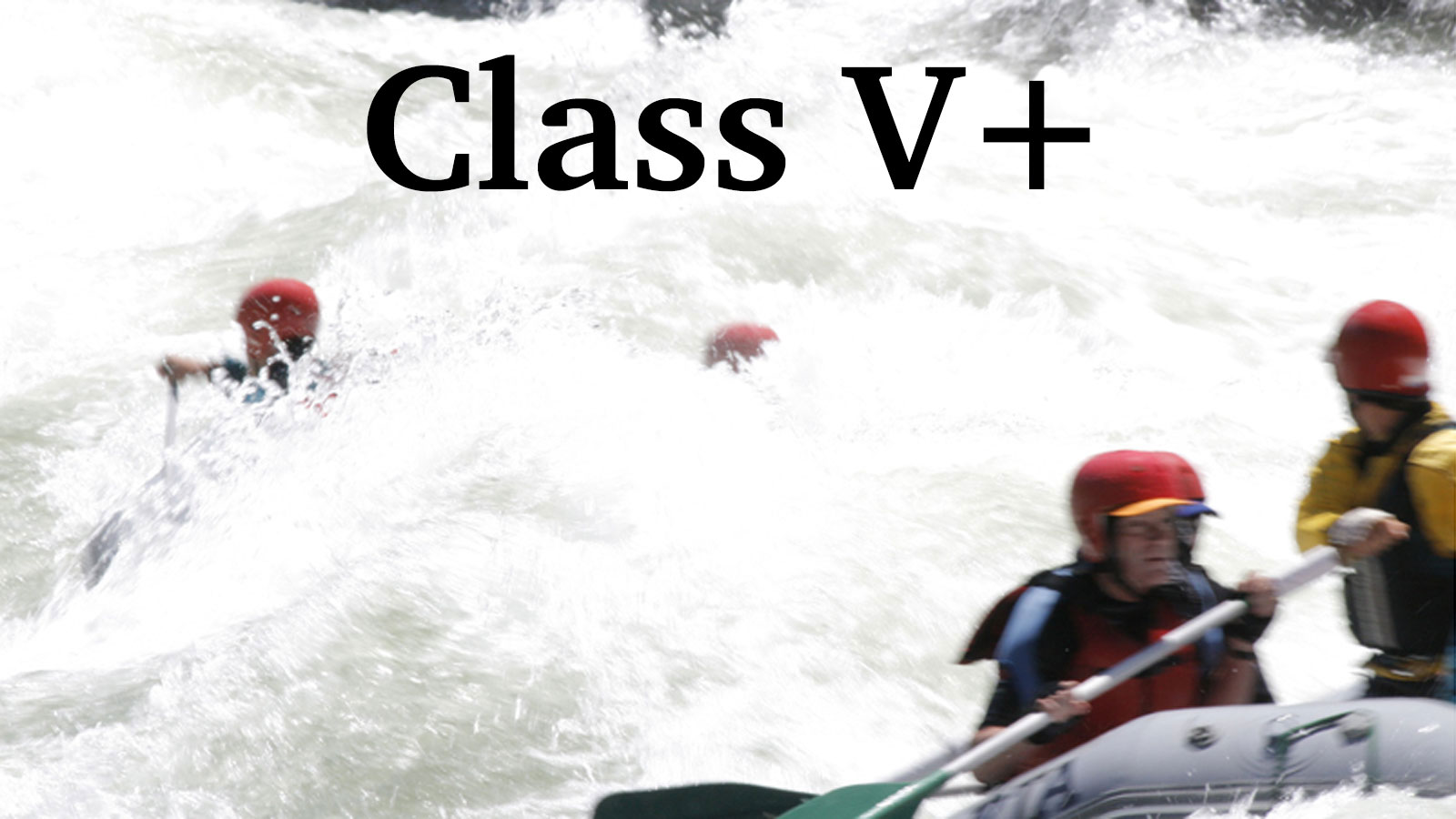
Class VI:
Crazy. Overpowering current over large drops or waterfalls with multiple opportunities for catastrophe and significant chance of injury.
You should: Probably not be here if you aren’t a trained professional.
Your guide is: Probably on his day off and probably a 20-something year-old male in a kayak.
Example: 1:50
Unrunnable:
Unrunnable: Waterfall. Uncontrollable current into near-certain death.
You should: Stand back.
Your guide is: Standing right next to you, gesticulating.
Example: Victoria Falls (not Niagara Falls, Niagara has been run, albeit in a barrel, so technically it is a Class VI).
